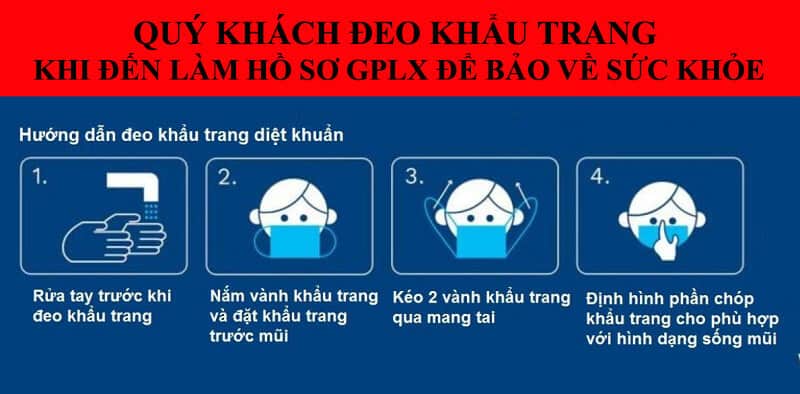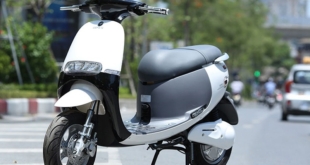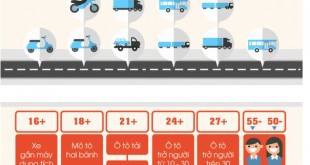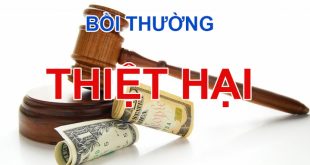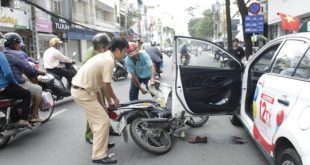Ladies and gentlemen, today we will be posting content about Meaning of road markings Along with other traffic signaling systems such as signals from traffic controllers, signal lights, and traffic signs, road markings are also a form of signaling to guide traffic control. .
Road markings can be used alone or in combination with other types of road signs or in combination with traffic control lights. Road markings may include lines or drawings on the road surface, or on sidewalks, on traffic works and some other parts of the road to regulate traffic order only. clearly define the size limits of traffic works, indicate the specified direction of traffic lanes.
You and your friends, when used independently, road users must obey the meaning of road markings, but if road markings are used in combination with signal lights and signs, Road users must at the same time obey the signal meaning of both road markings and signal lights together with signs in the following order: firstly, the order of signal lights and then signals. the signal of the road sign, then the signal of the road marking.
We take a specific example as follows, when going to an intersection, the road markings indicate that road users are allowed to go straight, but the signal light is red. At this point, the highest value is the signal light. has the highest effect, so road users must stop at the signal of the light after that, even if the signal light is green, but there is a sign in front of you to make a right or left turn, not allowing you to go straight. At this time, road users still have to obey the value of the sign and have to turn in the direction that the sign indicates.
Here we present to you and to you the meanings of some of the most common road markings in regulation 41 2016. Ladies and gentlemen, why are we presenting some of the meanings of some signs? Well, because it's in regulation 41, the road markings have a lot of different lines, if we present them all to you, it's very wandering, but actually, there are many road markings. As we do not use it and almost all road users rarely use it. Therefore, I only show the center of the road markings with which we most often collide.
- Line 1.1 is composed of a single dashed yellow line, the width is 15cm, the length is from 1 to 3m and the length of the broken section is from 2 to 6m. long. The meaning of line 1.1 is applied to divide two-way traffic of vehicles traveling in opposite directions in road sections with two or more lanes without medians, vehicles are allowed to cross to use opposite lanes from both sides.
- Line 2.1 is a single white dashed line with a width of 15cm, a solid line length of 1 to 3m, a broken length of 3 to 9m, this line is meant to divide traffic lanes in the same direction. lane change over the line.
- Line 1.2 is a single solid yellow line with a width of 15cm applied to divide two-way traffic for lanes with 2 or 2 lanes without a divider in between vehicles that must not encroach on the lane or overlap the line. This line is often used on roads where visibility is not guaranteed, and the risk of traffic accidents is high.
- Line 2.2 is a single solid white line 15cm wide, applied to divide lanes of traffic in the same direction, not allowing vehicles to change lanes or use other lanes, not to encroach on lanes, and not to overlap the line.
- Line 1.3 is a solid yellow parallel double line, each line is 15cm wide, the distance inside the two lines ranges from 2 to 15cm, this line applies 20-way division of vehicles running on roads with 2 lanes or more. Up without a divider in the middle of the vehicle, it is not allowed to encroach on the lane, it is not allowed to overlap the line, in the case of roads with 4 to 2 lanes without a median in the middle, line 3 can also be used to emphasize hazardous location, in this case the effect of line 1.3 will be the same as line 1.3
- Line 1.4 is a parallel double line with a broken solid line with a width of 15cm, the inner distance between the two edges is from 2 to 15cm, the segment of the dashed line has a length of 20 to 2m This line applies the 6-way division of vehicles on the road. with 2 or more lanes without a 2-way dividing line, vehicles on the lane adjacent to the dashed line are allowed to cross and use the opposite lane, vehicles in the lane adjacent to the solid line must not be cut cross the line
- Line 1.5 is a double dashed yellow line with a width of 15cm, the distance inside the two edges of the line is from 2 to 15cm, a solid line is 20 to 1m long, and a dashed line is 2 to 3m long, this line is used to determine the lane boundaries with high traffic. It is possible to change the direction of traffic on it from time to time, the direction of traffic at a time in the lane may be changed by the traffic controller, signal lights or other appropriate signals.
- Line 6.1 is a broken yellow line painted on the sidewalk near the edge of the road used to signal that stopping on the side of the road is not allowed.
- Line 6.2 is a solid yellow line painted closely to the sidewalk used to prohibit stopping and parking on the side of the road
s Steering Wheel Supplemental School in HCM s
- Line 9.2 is a single solid yellow line 10cm wide, drawn in the shape of an M-shaped break. This line specifies the stopping position of public passenger transport vehicles on the road such as buses, taxis, and other vehicles. Other vehicles and pedestrians must not stop within the road markings and within a distance of 15m from the position of the line to both sides along the road.
- Line 9.3 is a directional arrow line on the road surface used to indicate the direction the vehicle has to go, the direction arrow is mainly used at intersections with separation of lanes and on roads with many lanes, arrows can also be used. used for one-way sections of road to confirm the direction of traffic, if the road users do not follow the direction of the arrow, it is only a violation of the behavior of not obeying the instructions of the road markings, many people or was penalized for mistaking this error as a lane misdemeanor.
- Line 9.1 prohibits turning
- Line 5.3 consisting of 2 single dashed white lines running parallel slightly to the left is used to create a stopping space for vehicles to turn left after crossing the stop line, applicable to vehicles when When the time allowed to turn left has expired, but have not passed the limit by the lane waiting for the left turn, at this time, they must stop in the lane area according to line 5.3
- Line 5.1 is a left turn guide line through the intersection area used to direct the trajectory of left-turning traffic according to the lane organization solution used while the vehicle can cross the line when necessary.
- Line 4.4 is a hammock pattern used to warn traffic drivers not to stop vehicles within the road surface area with lines arranged to avoid traffic jams.
- Line 2.3 limits the lane reserved for a certain type of motor vehicle, solid line. Other vehicles are not allowed to enter this lane except in emergency cases according to road traffic laws. If this line is dashed, priority is given to a certain type of motor vehicle, other vehicles may use this lane, but other vehicles must give priority if priority motor vehicles appear in this lane.
- Line 3.1 applied to determine the outer edge of the vehicle is usually applied on highways and roads with a width of 7m or more and in other necessary cases. In case of organizing traffic for motorbikes to run together with rudimentary vehicles, signs must be used or combined with painted motorcycle or bicycle letters on this lane, motorbikes are allowed to run over the line when necessary and must yield. rudimentary driveway.
Thematic Common Traffic Laws
Ladies and gentlemen, so here we have discussed with you and you the meaning of some of the most basic road markings that people in traffic often collide with, if you want to study in depth. For more information, you can refer to the 41 standard 2016, we would like to stop this topic here, see you and you in the next meeting, thank you and you for your attention.
 Driving test & training school in Ho Chi Minh City Training, teaching and driving test school in Ho Chi Minh City
Driving test & training school in Ho Chi Minh City Training, teaching and driving test school in Ho Chi Minh City
